
Hsinchu is a city located in northwestern Taiwan. It is the most populous city in Taiwan that is not a special municipality, with estimated 450,655 inhabitants. Hsinchu is a coastal city bordering the Taiwan Strait to the west, Hsinchu County to the north and east, and Miaoli County to the south. Hsinchu is nicknamed the Windy City for its strong northeastern monsoon during the autumn and winter seasons.

Zhubei is a city in Hsinchu County, Taiwan. It is one of the island's fastest-growing settlements, with a population gain of 51,000 between 2010 and 2019, the highest of any township/city or district. The city has attracted migration both because of its proximity to Hsinchu City and the Hsinchu Science and Technology Park, and because the Hsinchu County government has focused most of its infrastructure here.
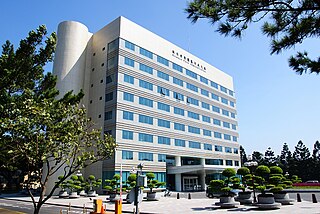
The Hsinchu Science Park is an industrial park established by the government of Taiwan on 15 December 1980. It straddles Hsinchu City and Hsinchu County in Taiwan.

Jinshan District, is a suburban district of southwestern Shanghai, neighboring Zhejiang province and Hangzhou Bay. It has a land area of 586.14 square kilometers (226.31 sq mi) and a population of 732,500 as of the 2010 Chinese census. Jinshan District, located in the southwest of Shanghai, is one of the biggest districts of the city. Local political administration is divided into nine towns and one subdistrict. About 6.2 kilometers (3.9 mi) off the coast of Jinshan, there are three islands named Dajinshan, Xiaojinshan, and Fushan. At 103 meters (338 ft) above sea level, the peak of Dajinshan Island is the highest point within the Shanghai municipality. There are several beaches along the 23.3-kilometer (14.5 mi) shoreline, which are popular tourism destinations.

National Hsinchu Senior High School is a high school in East District, Hsinchu City, Taiwan. Student enrollment averages around 2200.

The National Hsinchu Girls' Senior High School is a high ranked public high school in East District, Hsinchu City, Taiwan. Student enrollment averages around 2000. Students take Comprehensive Assessment Program for Junior High School Students to attend school. The campus is in Hsinchu City downtown where transportation is convenient, only 400 meters away from Hsinchu Train Station.
Hsinchu American School is private, international school with a largely based American curriculum located in East District, Hsinchu City, Taiwan. It was founded in 2004 by Glory Yeh, a Taiwanese real estate developer.
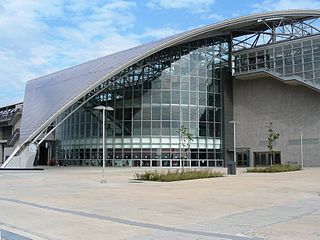
Hsinchu is a railway station in Hsinchu County, Taiwan served by Taiwan High Speed Rail. It opened for service in 2006. The station was designed by Taiwanese architect Kris Yao. Transfers to TRA Liujia station can be made at this station, which links to the Hsinchu TRA station located In Hsinchu City. Hsinchu HSR station is 11 km away from Hsinchu TRA station.
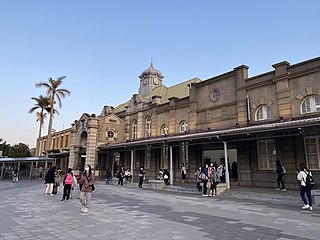
Hsinchu is a railway station in East District, Hsinchu City, Taiwan served by Taiwan Railways Administration. Hsinchu Station is a major station on the West Coast line and the western terminus of the Neiwan line.

The International Bilingual School at Hsinchu Science Park, formerly known as Bilingual Department of National Experimental High School At Science Based Industrial Park, is near the Hsinchu Science Park. It is part of a public, coeducational school (preprimary-12), National Experimental High School (NEHS). Founded in August 1983, the school was proposed by the founder of the Science Park Kwoh-Ting Li and administered by Ministry of Education, National Science Council and administration of the Park. Originally IBSH was formed to attract high-tech talent and technologies to move to Hsinchu Science park, but the Ministry of Education won't allow the creation of a school based solely for oversea workers. Thus, NEHS was created to satisfy the conditions set by the Ministry of Education. IBSH only admits children of employees of private enterprises in the Park, government organizations, Industrial Technology Research Institute, National Chiao Tung University and National Tsing Hua University.

Jinshan Railway or Jinshan Line is a commuter railway line in Shanghai, part of the planned Shanghai Metropolitan Area Intercity Railway. It runs from Shanghai South in Xuhui District via Xinzhuang in Minhang District to Jinshanwei in Jinshan District, crossing the Huangpu River on a dedicated railway bridge. Passengers can transfer to Lines 1, 3, 5 and 15. Originally built in 1975 as a suburban branch, it has since been upgraded into a high-speed commuter rail line which opened on 28 September 2012. The line was branded as Line 22 before opening. However, there is another line in long-term planning called Line 22, see Line 22.

Hsinchu International School is a private, international school located in Xiangshan District, Hsinchu City, Taiwan offering education to foreign-born students.

East District is a district in east Hsinchu City, Taiwan. It is the second largest of the three districts in Hsinchu City. The East District is home to the Hsinchu Science and Industrial Park.
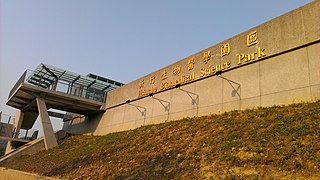
The Hsinchu Biomedical Science Park is an industrial park in Zhubei City, Hsinchu County, Taiwan which is part of the Hsinchu Science Park.
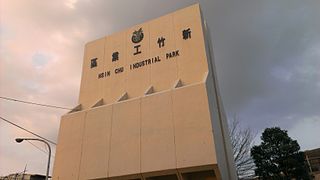
The Hsinchu Industrial Park is an industrial park in Hukou Township, Hsinchu County, Taiwan.

The National Hsinchu Living Arts Center is an arts center in East District, Hsinchu City, Taiwan.
The CIWC Tower is a skyscraper office building located in Hsinchu City, Taiwan. The building was completed in 2016, with a total floor area of 64,370 m2 (692,900 sq ft) and a height of 135 m (443 ft) that comprise 30 floors above ground, as well as five basement levels. As of January 2021, it is the tallest building in Hsinchu City.

National Yang Ming Chiao Tung University (NYCU) is a public research university in Taipei and Hsinchu, Taiwan. It was created in 2021 through the merger of National Chiao Tung University and National Yang-Ming University. At present, there are 19 colleges, 74 university/college level research centers, and 1 hospital in Yilan.
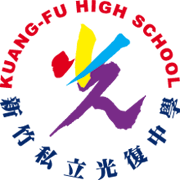
Hsinchu Kuang-Fu Senior High School, also shortened to Kuang-Fu High School, is a private comprehensive high school in Hsinchu, Taiwan. Founded in 1953, it is located in the city's East District, adjacent to National Tsing Hua University. It has a senior high school, a junior high school, a further education school, a vocational school, and a kindergarten.


















